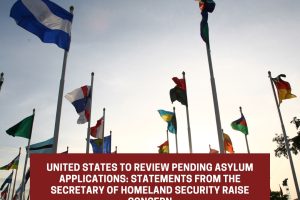
Evolution of the Deportation Process in the U.S.
The deportation process for immigrants in the United States has changed significantly in recent years. Under the current administration, Immigration and Customs Enforcement (ICE) has intensified raids and deportations, averaging between 1,000 and 1,200 removals per day. This increase in enforcement operations has raised concerns among immigrant communities and human rights organizations.
Raids and New Deportation Strategies
The Department of Homeland Security (DHS) has implemented stricter measures to expedite deportations, including the use of military aircraft to repatriate immigrants to various Latin American countries. This move has led to diplomatic tensions with nations such as Colombia and Mexico, which have expressed concerns about the coordination and impact of these policies.
You may also like: “Revocation of TPS for Venezuelans: Impact and Consequences”
Reduction of Consular Assistance
Historically, consulates played a key role in identity verification and providing assistance to immigrants undergoing deportation. However, in recent years, some countries have reduced or eliminated this support, leading ICE to validate detainees’ identities with limited information.
Deportation Priorities
ICE’s 2024 report highlights that deportation efforts prioritize individuals with criminal records, suspected terrorists, gang members, and those linked to human rights violations or war crimes. These operations have been facilitated by Department of Defense resources, including the deployment of C-17 and C-130 military aircraft.
Expansion of Detention Centers
With the rise in deportations, ICE has evaluated proposals from private companies to expand detention centers in states such as California, Texas, and New Jersey. Companies like CoreCivic, GEO Group Inc., and Management and Training Corporation have expressed interest in extending their federal contracts.
International Reactions
Countries like Peru have announced measures to support the workforce reintegration of deported citizens. Meanwhile, governments in Mexico and Central America have largely refrained from making official statements regarding the new U.S. immigration policy.
Conclusion
The U.S. deportation process continues to evolve, with stricter policies and enhanced logistics for repatriating immigrants. These changes have sparked mixed reactions both nationally and internationally, significantly affecting migrant communities and regional diplomacy.
From: https://www.vozdeamerica.com/a/proceso-formal-deportaciones-indocumentados-desde-eeuu/7955617.html
For more information on these topics, visit Paralegal Clases’ social media pages and join our live sessions every Wednesday.
Instagram: @Paralegalclases
Facebook: Instituto Paralegal de las Américas
Youtube: Instituto Paralegal
Tiktok: @Paralegalnews



